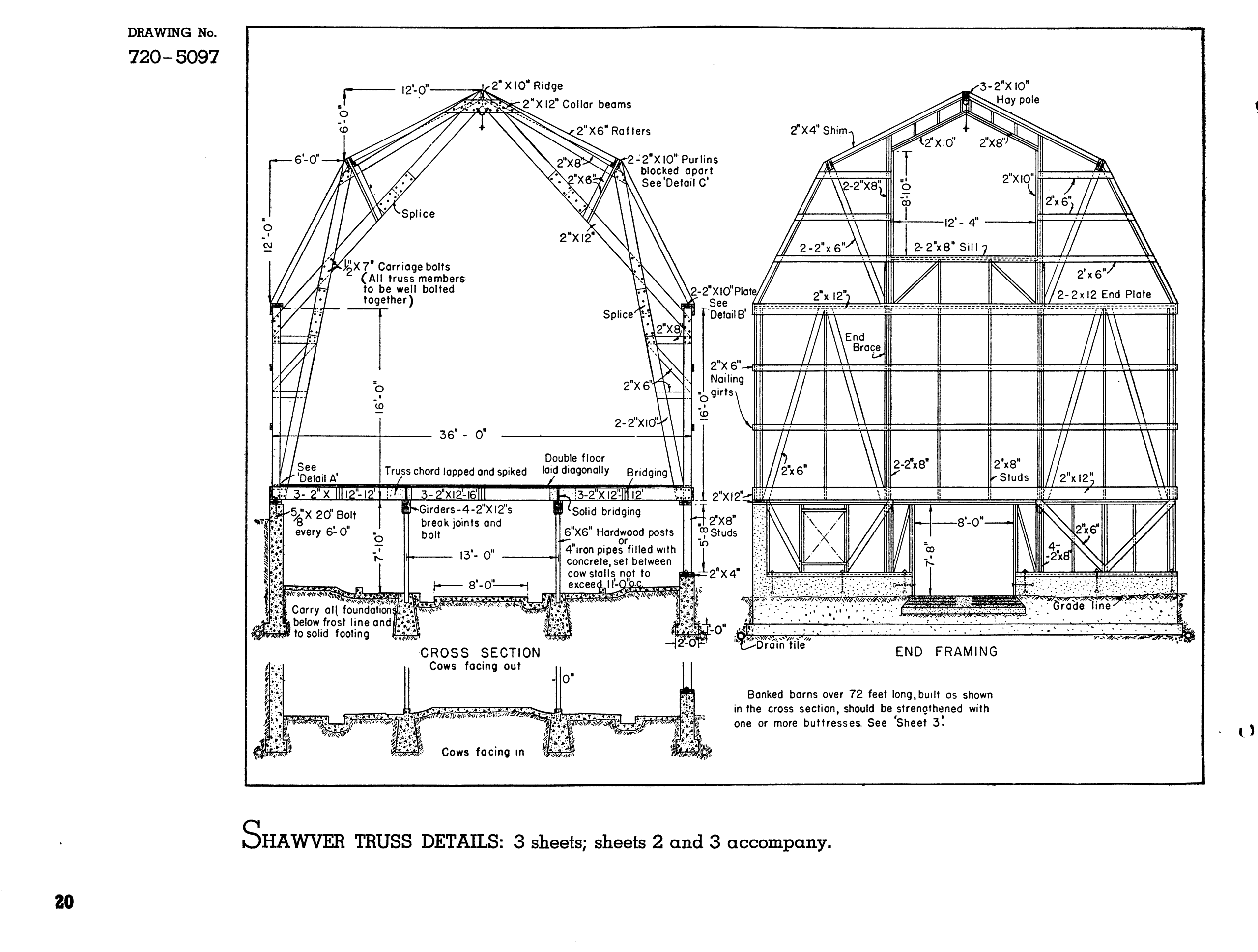| Key Points | Details |
|---|---|
| Significant Timber Savings | 40-60% saving in timber usage, crucial in timber-scarce areas. |
| Use of Alternative Timber | Enables utilization of timber not suitable for traditional frames. |
| Reduced Cutting Costs | Halving of sawing, cutting, and hauling costs. |
| Efficient Framing | 50 to 90% reduction in framing costs depending on design and skill. |
| Less Boarding for Builders | Reduces time and resources spent on accommodating construction crews. |
| No Interior Timbers | Eliminates obstructions for farm operations due to interior timbers. |
| Self-Supporting Arch Roof | Robust structural support through a self-supporting arch roof design. |
| Increased Durability | Design minimizes moisture accumulation, reducing decay. |
| Strong Support for Farm Operations | Provides strong support for hay forks or slings, essential in storage and operations. |
| Easy Expansion and Modification | Flexibility in building design allows for easy additions without material loss. |


John L. Shawver’s “Constructing a Plank Frame Barn,” forever changed the way barns were built in the United States in the early 1900’s. But, has been completely forgotten today.
Originally presented in the columns of “Carpentry and Building,” Shawver’s work responded to the growing demand for information on the plank frame system. This method, gained traction from the 1890’s to the 1910’s. It offered a practical, cost-effective, and efficient solution for the lumber shortage crisis of the time.
Shawver, using his hands on experience in constructing plank frame barns, was able to approach the topic from a farmer’s, or builder’s practical viewpoint. His book outlines several advantages of this revelutionary construction method:
Dramatic Timber Savings
A savings of 40-60% in lumber needed to construct a barn, in an era when timber is scarce was a game changer for farmers who’s costs were constantly on the rise.
New Lumber Sources
This method enabled the use of timber that wouldn’t be considered for traditional whole timber mortise and tenon frames.
Reduced Sawing, Cutting, and Hauling Costs
Plank Framing reduced on site labor by 50% over traditional timber framing.
Lower Overall Framing Costs
The cost of framing was cut down by a staggering 50 to 90%! Depending on the quality of the building plan and the individual builder’s skill.

Additional benefits highlighted include:
- Reduced Room and Board for Builders: Faster construction reduced the time and resources spent in housing construction crews.
- Elimination of Interior Timbers: Fewer obstructions for loading and unloading the barn with hay and grain.
- Self-Supporting Arch Roof: This feature provides robust structural support. A scaled down model supported the weight of 4 grown men.
- Increased Durability: The design minimizes moisture accumulation and decay.
- Strong Support for Hay Forks or Slings: Essential for efficient farm storage and operations.
- Flexibility for Expansion and Modification: The system allows for easy additions and changes without material loss.
Links to more information on Shawver Truss Barns
https://usmodernist.org/BJ/BJ-1920-10.pdf
https://archive.org/details/cu31924014526077
https://www.ndsu.edu/agriculture/ag-hub/ag-topics/ag-buildings/building-plans
